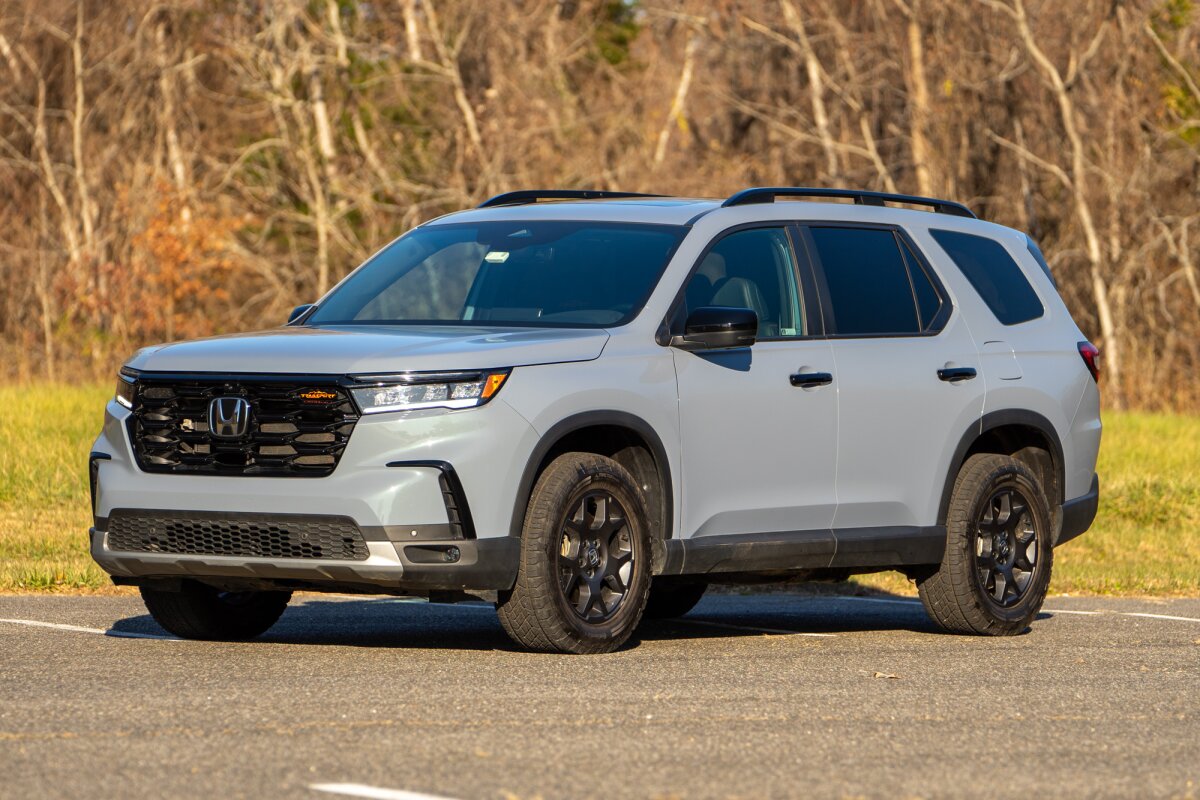As consumer preference continues to shift steadily and significantly toward SUVs rather than minivans, automakers are responding by introducing an increasing number of three-row SUV models in the U.S. market year after year.
Whether it’s for carpooling, substantial grocery hauls, or adventurous family road trips, three-row SUVs have proven to be more versatile, offering broad functionality for both everyday and occasional needs, along with the added benefit of all-season capability.
Despite the growing popularity of three-row SUVs surpassing that of minivans, they still fall short when it comes to interior space, particularly in the third-row area.
SUVs With 3-Row Seating That Stay Roomy
This shortcoming is especially noticeable in compact and mid-size SUV categories. Consequently, passengers seated in the third row especially adults often experience discomfort, which becomes more pronounced during extended trips.
In most cases, the key issue causing this discomfort is the lack of adequate legroom in the rear-most row. However, not all three-row SUVs are created equal; a select few do offer surprisingly spacious third-row seating.
Toyota Grand Highlander
3rd Row Legroom: 33.5 inches
The Toyota Grand Highlander is a fresh addition to the XL mid-size SUV category, offering a third row that can comfortably seat adults.
Its modern and refined design is matched by a spacious and upscale interior, loaded with amenities and featuring Toyota’s advanced Audio Multimedia infotainment system.
The Grand Highlander delivers impressive interior space across all three rows: front passengers get 41.5 inches of headroom and 41.7 inches of legroom, while the middle row offers 40.2 inches of headroom and 39.5 inches of legroom.
In the third row, there’s 37.2 inches of headroom and 33.5 inches of legroom, with a maximum cargo capacity of 97.5 cubic feet.
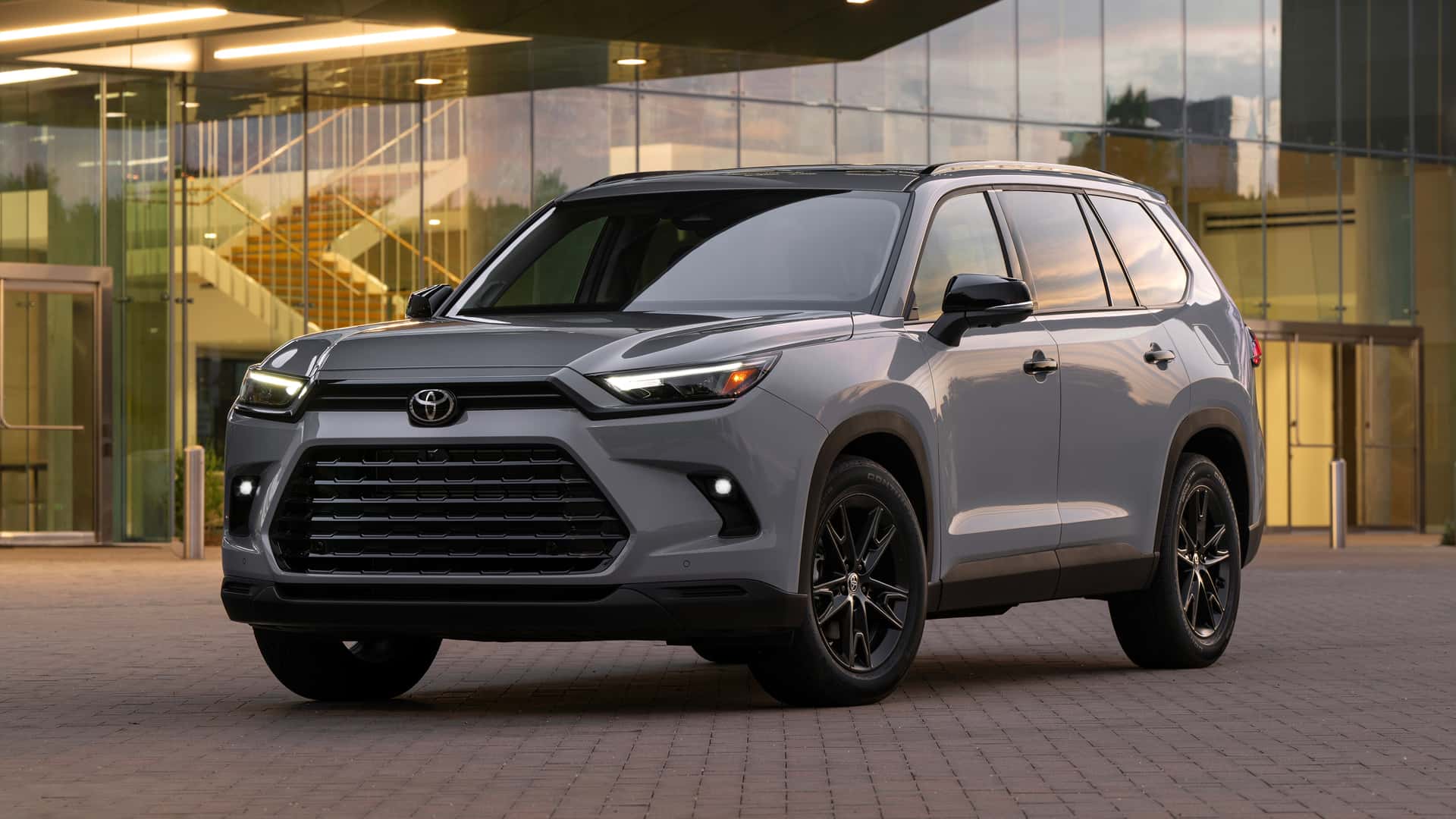
Optional interior features include an integrated dashcam ($499), a universal tablet holder ($99), a cargo net envelope ($75), and all-weather floor liners ($228).
Beyond space and convenience, the Grand Highlander shines in fuel efficiency and performance.
It comes with two hybrid options: a 245-horsepower unit that delivers up to 36 MPG combined (via EPA) and a 362-horsepower unit with a 27 MPG combined rating (via EPA).
Pricing ranges from $43,070 to $58,125, excluding a $1,395 destination processing and handling fee.
Dodge Durango
3rd Row Legroom: 33.5 inches
The 2024 Dodge Durango offers something unique in the mid-size SUV market muscle car performance in a family-friendly package.
Equipped with the powerful 6.2-liter Hemi SRT Hellcat supercharged V-8 engine producing 710 horsepower, the Durango combines Bilstein active suspension and Brembo brakes to deliver high performance.
It also leads its class with a best-in-class towing capacity of 8,700 pounds.
Interior space is generous, with 39.9 inches of front headroom and 40.3 inches of legroom, while the middle row has 39.8 inches of headroom and 38.6 inches of legroom.
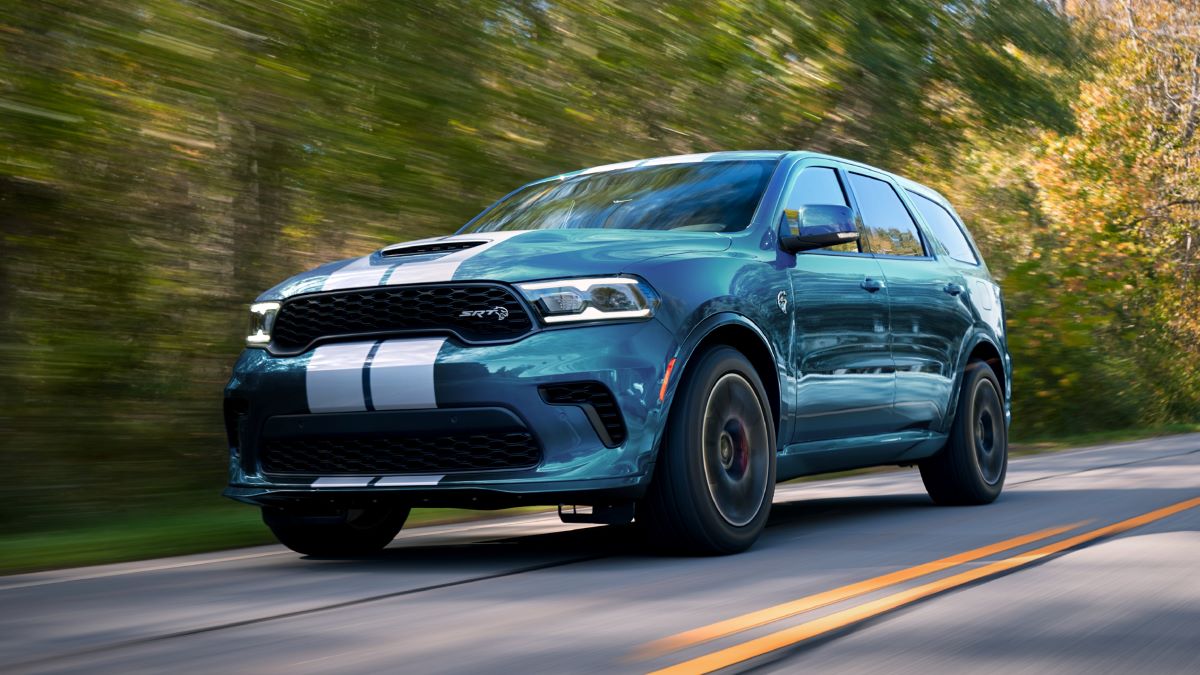
The third row provides 37.8 inches of headroom and 33.5 inches of legroom, and there’s up to 85.1 cubic feet of cargo space.
Optional interior features include second-row fold-and-tumble captain chairs ($1,495), a third-row seating group ($450), a 19-speaker Harman Kardon system with subwoofer ($1,085), and an all-weather Mopar package ($395).
Despite a nostalgic, analog-style interior with physical controls and a bulky dashboard, the Durango is equipped with modern tech, including a 10.1-inch Uconnect touchscreen with wireless Apple CarPlay and Android Auto, tri-zone automatic climate control, and USB-C ports. Pricing starts at $40,640 and can climb to a steep $105,810, excluding $1,595 in destination fees.
The 2025 Dodge Durango may be getting older, but it hasn’t lost its bold personality. Behind the tough exterior is a versatile three-row SUV that can seat up to seven or six if you opt for second-row captain’s chairs. Stellantis’ well-known UConnect infotainment system powers the standard 10.1-inch touchscreen, and standard heated front seats offer comfort, especially in colder climates.
The interior design continues to reflect the Durango’s muscle-car roots, staying true to its identity. Power comes from the tried-and-true 3.6-liter V-6 engine as standard, though the iconic 5.7-liter V-8 remains an available option.
A key part of the Durango’s appeal is its robust towing capacity—up to 8,700 pounds when properly equipped—which still impresses in today’s market. Even the V-6 variant can handle 6,200 pounds, making it a capable hauler.
While Dodge has significantly pared down the Durango lineup for 2025 in anticipation of a new replacement model, it has confirmed that special Last Call editions of both the Durango SRT 392 and the supercharged, 710-horsepower Durango SRT Hellcat will appear during the 2025 model year.
For those who find the Durango’s old-school, aggressive personality too bold, alternatives like the Kia Telluride, Mazda CX-90, or Toyota Grand Highlander provide more subdued options.
The GT Plus trim hits a desirable balance by combining the reliable V-6 engine with all-wheel drive. While all-wheel drive can be added to the base GT for $2,000, the GT Plus offers added features like upgraded dampers, 20-inch wheels, heated side mirrors, an eight-way power driver’s seat, red accent stitching, and other amenities.
For those craving traditional performance, Dodge has confirmed that 2025 will bring Last Call special editions of the Durango R/T V-8 and the Durango SRT Hellcat.
Though detailed specs are not yet available, readers can find our reviews of previous Durango SRT models and the limited-edition SRT Hellcat to tide them over until official updates on the 2025 versions are released.
Under the hood, the standard Durango offers a 295-horsepower V-6 paired with an eight-speed automatic transmission, a combination that’s capable and efficient if not particularly thrilling.
The 360-horsepower V-8 option adds noticeable muscle, especially in towing—capable of up to 8,700 pounds with the Tow and Go package—but this comes at a cost to fuel economy. Suspension tuning strikes a reasonable balance between sporty and comfortable, though the steering and braking dynamics lean toward the traditional SUV side of the spectrum.
Despite not being overtly sporty, the rear-wheel-drive platform gives the Durango an agile feel, and its muscle-car character remains evident during daily driving. Importantly, it’s not overly stiff, making it both fun and family-friendly for everyday use.
As for performance metrics, it’s been nearly ten years since Car and Driver last tested the Durango’s V-6 and V-8 configurations. However, given the lack of substantial powertrain updates, those numbers are likely still accurate.
In past testing, the V-6 achieved a 0-60 mph time of 7.4 seconds, while the V-8 version did it in 6.2 seconds. Both configurations were equipped with the standard eight-speed automatic and optional all-wheel drive.
Towing and payload ratings remain a strong suit for the 2025 Durango. V-6 models with either rear- or all-wheel drive are rated to tow up to 6,200 pounds. Models equipped with the 5.7-liter V-8 and all-wheel drive offer a towing capacity of 7,200 pounds, or up to 8,700 pounds when outfitted with the Tow and Go package.
Fuel economy ratings from the EPA suggest the V-6 will achieve up to 19 mpg in the city and 26 mpg on the highway. The V-8’s EPA estimates are 14 mpg city and 22 highway.
Despite its aging platform, the Durango’s interior still feels current, thanks to a well-thought-out design. The layout is ergonomic, and the front row maintains the blend of personal luxury and muscle-car aesthetics reminiscent of the Charger and Challenger. However, some competitors offer more generous space in the second and third rows.
The instrument cluster features red and white gauges on a black background, while the thick, leather-wrapped steering wheel includes stylish metal-look trim. In the R/T test model, paddle shifters behind the wheel provided satisfying feedback with each shift.
When it comes to cargo space, the Durango performed well—fitting 30 carry-on suitcases with all seats folded, and four with all rows in place. That’s two more than the GMC Acadia managed in both scenarios.
On the technology front, the Durango continues to use the dependable Uconnect infotainment platform. The 10.1-inch touchscreen is now standard across all trims and supports Apple CarPlay and Android Auto.
For passengers in the back, an optional rear-seat entertainment system includes dual screens and HDMI/RCA inputs for added device connectivity. Bluetooth call quality is commendable; during one test drive, a caller noted being able to clearly hear the V-8’s rumble in the background, underscoring the Durango’s unmistakable engine presence.
Honda Pilot
3rd Row Legroom: 32.5 inches
Although it resembles a rugged, body-on-frame SUV, the Honda Pilot is built on a unibody platform that prioritizes comfort and interior space.
While the TrailSport trim adds some off-road capability, the Pilot overall is a smooth, family-oriented vehicle powered by a straightforward V-6 engine.
It boasts a roomy interior with 40.5 inches of front headroom and 41.0 inches of legroom, 40.2 inches of headroom and 40.8 inches of legroom in the second row, and a third row with 39.3 inches of headroom and 32.5 inches of legroom.

Cargo space is impressive, maxing out at 158.4 cubic feet. Interior add-ons include a cargo barrier ($480), folding cargo tray ($130), cargo cover ($300), and a cargo organizer ($88).
The Pilot’s interior is designed for flexibility and comfort, with a standout feature being its removable second-row middle seat, which enhances access to the third row.
This seat can be conveniently stored in the underfloor cargo compartment. Pricing ranges from $37,090 to $52,480, not including a $1,375 destination charge.
Ford Explorer
3rd Row Legroom: 32.2 inches
The Ford Explorer continues to be a top seller in the U.S. mid-size SUV market, ranking third in 2022. Built on a unibody chassis with rear-wheel drive, it’s engineered for both practicality and enjoyable driving dynamics.
A 400-horsepower ST trim adds to the sporty appeal, and an optional all-wheel-drive system increases off-road capability.
The Explorer’s cabin offers 40.7 inches of front headroom and 43.0 inches of front legroom, while the middle row provides 40.5 inches of headroom and 39.0 inches of legroom.

The third row offers 38.9 inches of headroom and 32.2 inches of legroom, with a maximum cargo volume of 87.8 cubic feet.
Optional features include a twin-panel moonroof ($1,695), a technology package ($995), a console vault safe deposit box ($400), and a large soft-sided cargo organizer ($100).
While the Explorer offers solid performance and space, the interior design and technology offerings lag behind some of its rivals, especially at higher price points.
Pricing starts at $36,760 and tops out at $53,820, excluding $1,595 in destination charges.
Subaru Ascent
3rd Row Legroom: 31.7 inches
For Subaru enthusiasts including WRX and BRZ fans the 2024 Ascent serves as a family vehicle that aligns with brand loyalty.
Though not the most spacious in its class, the Ascent can comfortably accommodate two children in the third row.
Interior space includes 41.2 inches of front headroom and 42.2 inches of front legroom, 40.0 inches of headroom and 38.6 inches of legroom in the middle, and 36.2 inches of headroom and 31.7 inches of legroom in the third row.

Cargo capacity peaks at 75.6 cubic feet. Optional features include a wireless charger ($354), a medium pet harness ($91.99), a pet-friendly padded cargo liner ($249.95), and a cargo tray ($107).
Subaru emphasizes safety, equipping the Ascent with numerous standard features, though some may find the systems overly intrusive.
The Ascent’s pricing begins at $34,195 and goes up to $48,495, excluding a $1,295 destination and delivery fee. The 2025 Subaru Ascent remains a compelling choice in the three-row SUV segment, offering seating for seven or eight passengers depending on the configuration.
It comes standard with all-wheel drive and a turbocharged four-cylinder engine, along with a generous selection of safety and convenience features. For 2025, Subaru has discontinued the base trim, elevating the Premium to the new entry-level model. This change brings more standard features across the lineup.
The Ascent made a strong debut in 2019 and has seen multiple updates over the years, but it’s now facing tougher competition from newer and more refined rivals in the segment, which have somewhat overshadowed its earlier momentum.
Subaru’s reputation for safety is well represented in the Ascent. The 2024 model earned the Top Safety Pick+ designation from the Insurance Institute for Highway Safety (IIHS), which is the organization’s highest accolade.
The 2025 model continues this trend with a five-star rating in crash tests conducted by the National Highway Traffic Safety Administration (NHTSA). The inclusion of an array of advanced safety features, both standard and optional, has helped the Ascent maintain its status as one of the safest vehicles in its class.
Inside, the Ascent boasts high-quality materials and a design that prioritizes comfort and practicality. It offers excellent outward visibility, generous ground clearance, and strong towing capability, making it a solid option for families with active lifestyles. However, there are some drawbacks.
The accelerator pedal is overly sensitive, engine and tire noise can be intrusive, and interior space is tight in the second row at the shoulders and in the third row overall.
With the addition of new Bronze Edition and Onyx Edition Touring trims for 2025, Subaru continues to refresh the Ascent’s appeal, even as it remains in its first generation since launching in 2019.
Though it may not be the newest or most refined in its category, the Ascent stands strong with its focus on safety, capability, and standard all-wheel drive.
Smallest 3-Row SUVs That Feel Cramped
Small-bodied SUVs and three-row seating often don’t make the best combination. To be genuinely practical, a third row needs enough overall vehicle length to provide sufficient room for adult passengers.
In many cases, adding this extra row significantly reduces the already limited cargo space that smaller SUVs offer.
However, for some buyers, these compact third-row seats provide just enough room to accommodate children or to allow two adults to tag along on shorter journeys.
In creating this list, we’ve primarily looked at compact SUVs, with the inclusion of a couple of models that sit on the borderline between compact and mid-sized classifications.
2025 Kia Sorento
With a body length of 189.6 inches, the 2025 Kia Sorento is an excellent choice for families who value fuel efficiency and everyday functionality.
The SUV features a sleek exterior and offers an available hybrid powertrain that effectively balances performance and fuel economy.
This makes it a strong contender for both city driving and long-distance road trips.
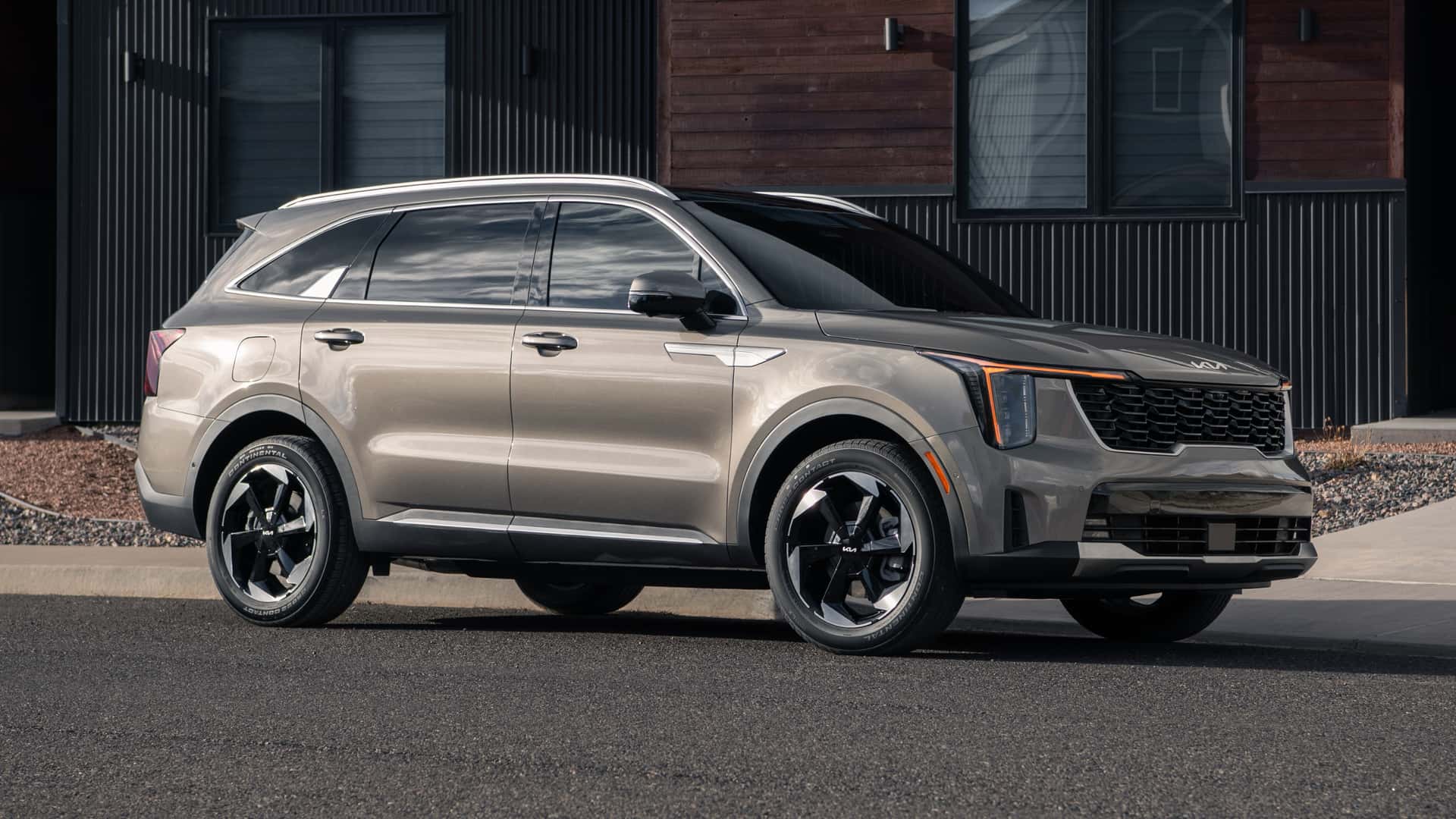
While the third-row seats are compact and better suited for children, the Sorento compensates with a roomy second row and a well-equipped cabin that includes a highly intuitive infotainment system.
It’s particularly appealing for drivers seeking to downsize from a larger SUV without compromising on versatility or capability, making it one of the best small SUVs with a third row.
The cargo space includes 75.5 cubic feet behind the first row, 38.5 to 45 cubic feet behind the second, and 12.6 cubic feet behind the third, with third-row legroom at 29.6 inches.
The 2025 Kia Sorento remains a strong contender for buyers who need a vehicle capable of seating six or more people but don’t want something overly large or expensive. Positioned neatly between the larger Kia Telluride and the smaller Sportage, the Sorento offers a third-row seat that’s functional for occasional use.
True to Kia’s formula, the Sorento boasts an impressive list of standard features, such as wireless Apple CarPlay and Android Auto, lane keeping assistance, and multiple USB charging ports.
Buyers also have the option to select a turbocharged engine, which delivers more power than most vehicles in this category require—though the added performance certainly won’t draw any complaints.
For 2025, the Sorento hasn’t seen any major changes, continuing on as part of the fourth generation introduced in 2021. Despite the lack of updates, the model still offers excellent value and versatility.
Kia’s recent major refresh of the Sorento brought a surprising level of variety under a single model name, which can make the lineup somewhat confusing for buyers.
Among the available trims are the X-Line and X-Pro versions. The X-Line is geared toward buyers with a taste for adventure, adding roof rails, all-wheel drive, and a rugged exterior design.
The X-Pro trim builds on the SX-Prestige, equipping it with all-terrain tires and enhanced towing capacity. While the Sorento X-Pro isn’t designed for extreme off-roading like the Rubicon Trail, it does offer greater confidence for dirt paths, light trails, or hauling a trailer.
Inside, the Sorento provides a quiet and comfortable cabin, particularly on the highway. Second-row legroom is generous for the class, and the infotainment system is both sharp-looking and user-friendly.
However, not everything is perfect. When the third row is in use, cargo space becomes quite limited, and the ride quality can feel too stiff when driving over rough pavement.
Overall, the 2025 Kia Sorento stands out as one of the best three-row SUVs in its class, especially for buyers seeking flexibility and value. If you’re open to spending a bit more, the Kia Telluride is a worthwhile upgrade, offering increased space, superior capability, and a more upscale interior.
Alternatively, Hyundai’s Santa Fe provides a similar experience to the Sorento, sharing much of the same hardware and features. For those who don’t need a third row, the Kia Sportage also remains a strong and more compact option.
2025 Tesla Model Y
Measuring 187 inches in length, the 2025 Tesla Model Y is the only fully electric SUV on this list that features an optional third row.
Though the third-row seats are most appropriate for children, the Model Y stands out with impressive electric range, quick acceleration, and forward-thinking technology.
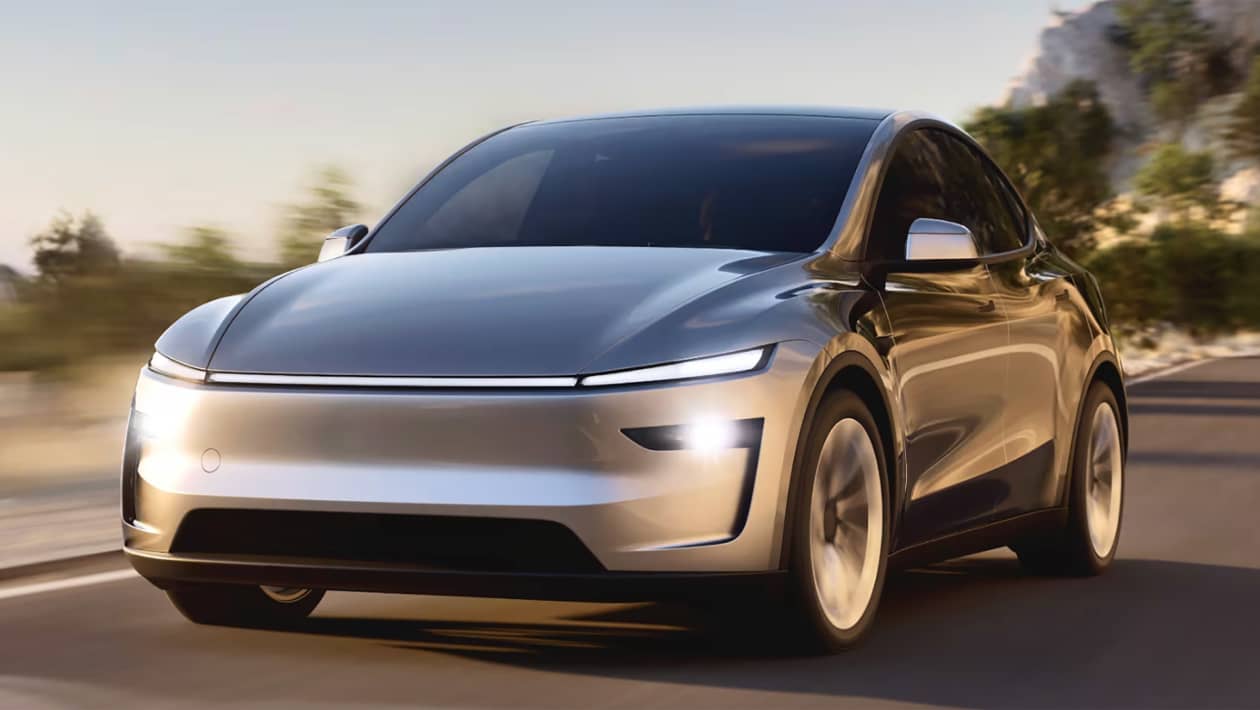
The minimalist interior includes a large central touchscreen that manages nearly every aspect of the vehicle.
With a range of over 300 miles and a spacious second row, the Model Y is ideal for families interested in sustainable transportation without sacrificing performance.
It offers 67.9 cubic feet of cargo space behind the first row, 26.6 cubic feet behind the second, and 12.8 cubic feet behind the third, while the third-row legroom measures 27 inches.
2025 Mitsubishi Outlander
At 185.4 inches long, the 2025 Mitsubishi Outlander offers a budget-friendly and practical solution in the compact SUV segment. All trims come standard with third-row seating, which is a rarity in this size class.
While the third row is extremely tight and best suited for occasional use, the Outlander still stands out with its sharp design, soft-touch materials, and ample technology features.
The interior is thoughtfully designed for family use, and the SUV earns strong safety ratings along with easy-to-drive handling.
These qualities make it a solid pick for budget-conscious buyers who need the occasional flexibility of extra seats.
According to Mitsubishi, “Simple, modern, and spacious, the cabin boasts three rows of seating for up to seven people.
The available power memory driver’s seat brings customizable comfort to every driving experience, while everyone’s temperature is just right with available Triple-Zone Climate Control.”
The Outlander offers 64.3 cubic feet of cargo volume behind the first row, 30.6 behind the second, and 10.9 behind the third, with a third-row legroom of 18.7 inches.
The 2025 Mitsubishi Outlander Hybrid presents a compelling package at first glance. Its bold exterior styling differentiates it from competitors, the technology offerings are on par with class expectations, and its estimated 38 miles of electric-only driving range paired with competitive pricing suggests strong value.
The Outlander Hybrid also accelerates faster than the non-hybrid model, giving it an edge in urban driving. However, once you delve deeper, its appeal starts to fade. The drive experience is generally uninspiring, and its fuel efficiency drops noticeably once the battery is depleted.
The third-row seat is cramped and not practical for adults, and its use of the outdated CHAdeMO fast-charging port could pose challenges at public charging stations. Compounding these drawbacks is Mitsubishi’s limited dealership network, which might make service and maintenance less convenient.
As a result, the Outlander Hybrid sits mid-pack in a field filled with more well-rounded competitors like the Hyundai Tucson Hybrid, Kia Sportage Hybrid, Ford Escape, and Toyota RAV4 Prime.
For 2025, the Outlander Hybrid gains a few feature upgrades. Heated front seats now come standard across all trims. The SEL trim receives a heated steering wheel and a panoramic sunroof.

Mitsubishi also extended the free trial for its Connect Safeguard Services—which includes emergency SOS, security alerts, and battery status monitoring—from two years to five.
However, the Remote Services suite, which includes functions like remote start and parental controls, remains limited to a one-year trial. Notably, while the standard gas-powered Outlander received a styling update, the hybrid version carries over unchanged.
Pricing for the 2025 Outlander Hybrid starts at $42,145 and tops out at $53,355 depending on trim level and options.
It adds notable upgrades over the base model, including 20-inch wheels, rain-sensing wipers, a power liftgate, a larger 9.0-inch infotainment system with built-in navigation, wireless Apple CarPlay and Android Auto, heated front seats with eight-way power adjustment, a leather-wrapped steering wheel, adaptive cruise control, lane-keeping assist, parking sensors, and more.
Buyers with more flexible budgets might want to add the Tech Package, which includes a panoramic sunroof, a nine-speaker Bose audio system, and an auto-dimming rearview mirror.
Under the hood, the Outlander Hybrid uses a 2.4-liter four-cylinder engine paired with two electric motors, delivering a combined 248 horsepower. In city driving, it feels livelier than the standard gasoline Outlander, especially at low speeds. Despite this, the driving experience is largely forgettable.
The ride is decent, but handling is dull, and driving enthusiasts might find more enjoyment in alternatives like the Dodge Hornet Hybrid or Mazda CX-50.
The brake pedal feels soft and lacks confidence, although actual braking performance is acceptable. Paddle shifters allow the driver to adjust the level of regenerative braking, with the strongest setting enabling near one-pedal driving and reducing reliance on the spongy brake pedal.
Performance-wise, the Outlander Hybrid SEL accelerated from 0 to 60 mph in just 6.6 seconds during testing—substantially quicker than the non-hybrid Outlander, which required 8.2 seconds.
The hybrid’s 16.8-kWh battery pack supports up to 38 miles of electric-only driving, placing it ahead of plug-in hybrid versions of the Hyundai Tucson and Ford Escape, but slightly behind the Toyota RAV4 Prime, which offers a 42-mile range. In real-world highway conditions at 75 mph, the battery depleted after 24 miles.
Charging can be slow using the standard onboard system, taking approximately 6.5 hours to fully recharge at home. While DC fast charging is available, it relies on the outdated CHAdeMO port, which may be difficult to find at modern charging stations.
In terms of fuel economy, the Outlander Hybrid receives EPA estimates of 25 mpg city and 27 mpg highway on gasoline alone, and 64 MPGe when accounting for electric driving range.
These figures are somewhat disappointing compared to rivals that offer better fuel efficiency and similar or superior EV range. During highway testing, the vehicle returned 25 mpg on gasoline and 44 MPGe when including 24 miles of EV operation. For the most accurate data, you can consult the EPA’s official website.
Inside, the Outlander Hybrid sees significant improvements over its predecessor. The cabin now features higher-quality materials, updated surfaces, and a more modern design.
Available tech includes a 12.3-inch digital instrument cluster and a head-up display. First- and second-row passengers enjoy more space than before, but the third row is still extremely tight and best reserved for children or very short trips.
Among compact SUVs, only the Volkswagen Tiguan offers a third row, and even then, only on front-wheel-drive models. Cargo space has also increased slightly, with an additional cubic foot of room behind the second and third rows.
In conclusion, the 2025 Mitsubishi Outlander Hybrid delivers a mix of style, features, and plug-in electric range that may appeal to certain buyers. However, its uninspiring dynamics, outdated charging tech, and relatively high pricing weaken its position against better-rounded alternatives in the hybrid compact SUV segment.
2025 Mercedes-Benz GLB-Class
With a body length of 182.4 inches, the 2025 Mercedes-Benz GLB-Class delivers a luxurious driving experience in a compact SUV form.
Its optional third-row seating is rare among subcompact luxury SUVs and provides added flexibility, particularly for families with small children.
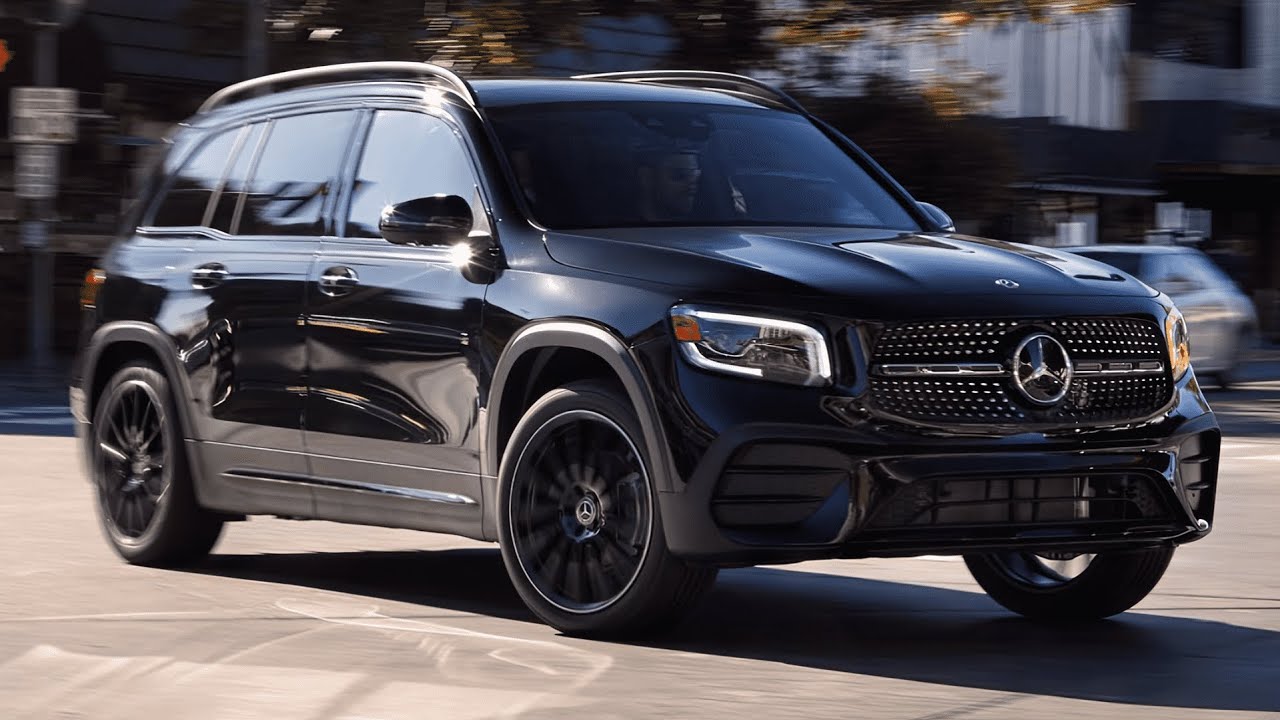
The GLB’s boxy shape optimizes interior space, and its tech-forward cabin includes dual digital displays that are customizable and user-friendly.
Although the third-row space is tight, the second row offers generous room, making the GLB a practical and upscale option for those who desire versatility with premium touches.
The SUV provides 62.0 cubic feet of cargo volume behind the first row, 20.0 cubic feet behind the second, and 12.4 cubic feet behind the third. Third-row legroom is 29.1 inches.
2025 Land Rover Discovery Sport
At just 180.9 inches long, the 2025 Land Rover Discovery Sport is the smallest 7-seater SUV in terms of body length, offering a refined blend of off-road capability and urban usability.
Its optional third-row seating is compact and most suitable for children, but the vehicle shines in its ability to adapt, thanks to fold-flat second and third rows that enhance cargo flexibility.
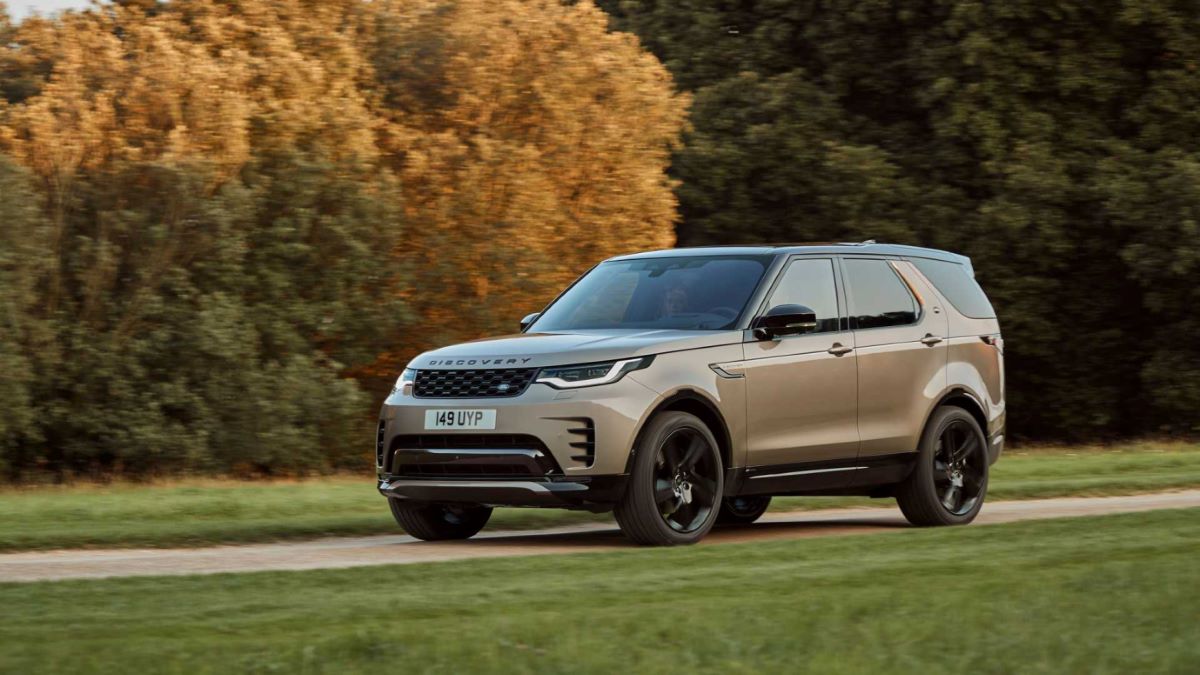
Despite its smaller size, the interior is crafted with high-quality materials and features an intuitive infotainment system, upholding Land Rover’s reputation for luxury.
For families in search of a compact yet stylish and functional SUV, the Discovery Sport is a compelling choice.
It offers 60.0 cubic feet of cargo space behind the first row, 32.2 behind the second, and 6.8 behind the third. Third-row legroom is 25.7 inches.

